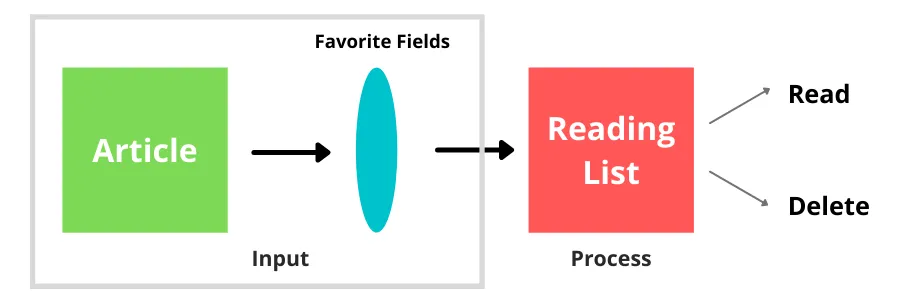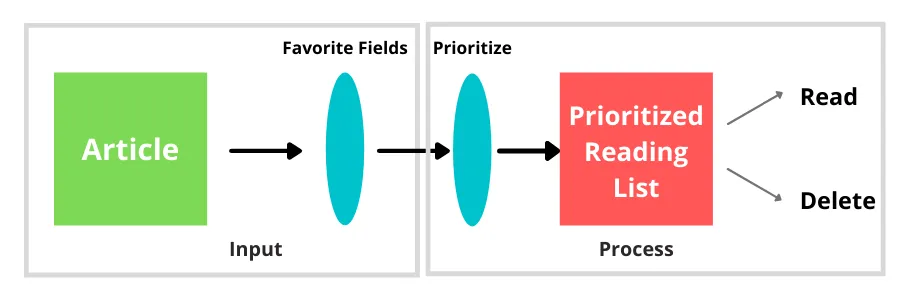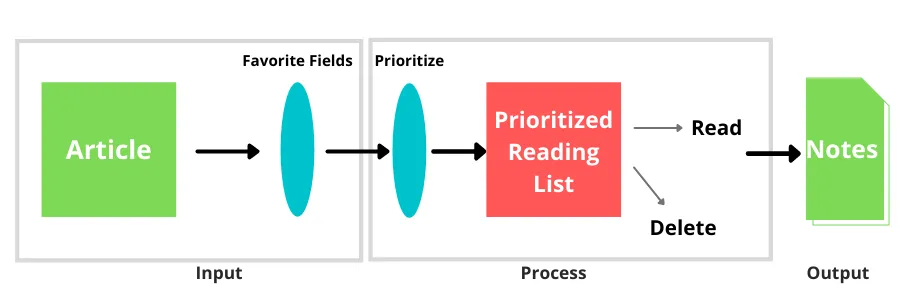The following is a guide on how to increase your learning by reading performance. The author talks about the TEA (Time, Energy, Attention) model, and how you need to save it to maximize your effectiveness for learning.
https://prashants.in/blog/toolkit-on-creating-reading-workflow/
This week, I was trying to figure out the best workflow for all the things that I read. Have you thought about how you read or how should you read?
Most of us read a lot of things these days. News headlines in newspapers, on TV news channels, or on the internet. Memes and jokes on social media. Tweets, status updates by friends and family. Articles by people about topics that interest us. Books. My newsletter, among others.

Photo by Luriko Yamaguchi from Pexels
How do you actually read them?
Do you just read them as they come to you? Like reading an article that came on your Facebook feed as soon as you saw it? Do you immediately buy and start to read a book that was recommended by a friend? Or do you add them to your reading list and then read them at a fixed time slot? Do you read any and every article shared by your friend or do you select a specific article based on the topics?
Do you read books recommended by a particular person whom you admire or do you select the books based on the subject you like? Do you take notes while reading?
Does it matter how you read?
Whatever you do in a day takes away your time, energy, and attention (TEA). And unless you are deceived by Big Hustle [1], all of them are limited in amount. So each task you process consumes some amount of your TEA and leaves less of it for the next tasks.
Every word you read also takes away part of your TEA and thus, there is only a finite number of words you can read each day. This makes it essential to actively decide what should you read and when, instead of passively consuming content.
How should you read?
Let’s try to figure out the optimum reading workflow together for each one of us.
Reading list and a devoted time
Instead of reading an article right away, adding it to a reading list to read later might be a good way to find out if you really want to read about something. The celebrity gossip that looks so inviting right now may not be what you want to read at 5 PM the next day.
But this may also cause you to pile up a huge list of reading material which causes unnecessary stress if you do not clean it regularly.
A workflow: you find out an article on your Twitter feed that you are interested to read. You add it to your reading list. Every day at a fixed time, you open up your reading list to go through each item one by one. You can either read the article, delete it from the list, or save it for later reading.

Reading Workflow 1
The workflow has only two parts – the input and processing (the reading/deleting part).
Choose what you input
What you read is what you feed your brain. When you let someone else decide what you feed to the brain (such as the social media algorithms), you let them take control.
Instead of reading everything that comes to you, you should decide whether you want to read it. Similar to Feynman’s 12 favorite problems, you can lay down the fields you want to learn more about. Then you can test each input article against those fields — does reading about this advance me towards learning more about in the 12 (or less) fields I want to grow in?
For example, I may want to learn only about the field of human psychology, marketing, and game theory. If I come across an article describing how ants pee, I may not want to read it.
But here comes an interesting problem. How do you know whether the article you are currently throwing away will not help you in the future? [Watch Steve Jobs’ Commencement Address at Stanford where he explained how learning calligraphy helped in creating a better Mac]? Or what happens if your favorite fields change in the future?
For example, I may use what I learned in the ant peeing article in a marketing campaign of an organization to generate the interest of the people interested in insects. Or maybe I want to start learning more in the field of insect life.
It also feels very limiting to only read about a particular field of interest. You want to be able to bring ideas from different domains.
There is no correct way to work on this. It depends on how you view this problem. If you are young and starting in a new field, you may want to read a diverse set of articles. Further on, when you have decided to work on a given problem, you can switch to more strict filters based on your favorite fields. This is similar to Paul Graham’s thought on doing a breadth-first search when you are young.
The workflow now changes to testing each input against a set of fields you want to progress in and then sending it to the reading list for processing. Now our input part has two steps, the input article and the vetting against your favorite fields.

Reading Workflow 2 Flowchart
Prioritize what you want to read
Most of us understand that to be more effective at work, it is necessary to prioritize what we are working on. Lower priority tasks can be delegated or deleted, while urgent and important tasks are to be finished first.
This same concept can be applied to your reading list as well. You want to read the articles which you deem are higher in priority due to any set criteria. For one month, articles and books on topic X may be the highest priority because you have to attend a conference at the end of the month. Other times, reading about distributed computing may be higher in priority because you started working on a new startup.
Low priority reading can similarly be delegated to others. Reading book notes on websites, concise twitter threads on topics is how you delegate your reading to other people. This makes it easier for you to get to know the core of the thought behind it without doing much of the hard work.
The workflow changes again. Now the processing involves prioritizing each input article or book as well. We have a prioritized reading list now.

Reading Workflow Flowchart 3
Take notes
Do you remember that article you read last year that blew your mind? Me neither.
Reading anything is a significant TEA investment. If you keep going back to read it each time you want to remember the concepts of that article, you will be wasting a lot of time. If you instead take notes on the important stuff or at least highlight the points that you believe are important, you will be able to save a lot of time the next time you want to work with that information.
Our workflow has an additional step now. Processing your reading list will create an output in the form of notes.

Reading Workflow Flowchart 4
Toolkit on taking notes and retaining knowledge – Prashant Sengar
Perfection
So this is how our perfect reading workflow looks like if we want to perfectly utilize our TEA.
On the other hand, if you are casually scrolling Twitter or Hacker News at night to just relieve your mind from all the hard work you did in the day, then just read whatever you want. Who cares about productivity then.
Tools
I use Notion to manage my reading list and also to highlight and take notes. The database feature allows me to add tags and priority to each item as well. Whenever I encounter an article that I want to read, I use the Save to Notion chrome extension to add it to my Notion database. It also clips the webpage so all the content of that page is also added to to Notion.
There are other tools to manage your reading list such as Pocket and Instapaper.
There is also Readwise which has a lot of integrations with other tools such as Roam and Twitter while offering a lot of cool features.
Raindrop.io is a bookmark manager which helps you sort your bookmarks into folders and tags.
Footnotes
[1] Big Hustle – Similar to Big Pharma, the industry that wants you to keep hustling day and night without taking a break.
Closing Thoughts
If you like this issue, you can read the rest of them here on my website.
If you received this email from a friend, you can subscribe here. I write such an article every second week.